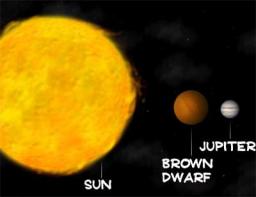A team led by Philippe André du Service d'Astrophysique-Laboratoire AIM du CEA-Irfu has just uncovered the very first stage of the formation of a brown dwarf, one of these tiny stars with a mass just above the planets. Several hundreds brown dwarfs have already been detected in the galaxy but up to now it was impossible to observe their formation. Thanks to the great interferometer of IRAM (Institute de Radioastronomie Millimétrique), the scientists have located a compact condensation of gas and dust with a temperature of only 10 degrees above the absolute zero and a mass approximatively 2% the solar mass. These characteristics are exactly what expected to give birth to a brown dwarf. The discovery of this first proto brown dwarf is published in the Science magazine of July 6th, 2012
For a more detailed account, see the French version.
Contact :
Publication :
“Interferometric Identification of a Pre-Brown Dwarf”
Philippe André (1), Derek Ward-Thompson (2), Jane Greaves (3)
(1) Service d’Astrophysique- Laboratoire AIM, CEA-IRFU, France.
(2) University of Central Lancashire, UK
(3) Physics and Astronomy, University of St Andrews, St Andrews, UK
published in Science, 6 July 2012
for an electronic version [1]: fichier pdf (3.5 Mo)
see "Perspectives" in Science
See also : the CEA Press Release (in french) (6 juillet 2012)
the IRAM Press release (6 juillet 2012)
See :
| - Bouleversement dans la compréhension des étoiles (Dossier presse 29 avril 2011) |
| - Premier anniversaire pour le satellite Herschel (6 mai 2010) |
| - Images d'étoiles avant leur naissance (17 décembre 2009) |
| - Cascade de naissances dans les nuages sombres (30 septembre 2009) |
Notes :
[1] This is the author's version of the work. It is posted here by permission of the AAAS for personal use, not for redistribution. The definitive version was published in Science (Vol 337, 6 July 2012), doi:10.1126/science.1222602.
Redaction: J.M. Bonnet-Bidaud
• Structure and evolution of the Universe › Planets, star's formation and dynamics, interstellar medium Structure and evolution of celestial bodies




